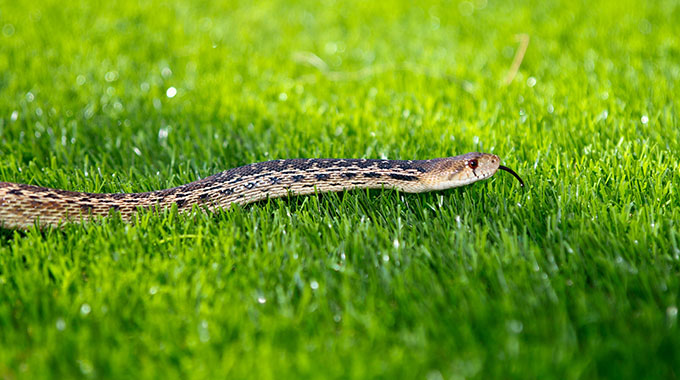
Tinashe Farawo
Parks & Wildlife
ZIMBABWE is home to 80 different snake species, which is why it is classified as a snake country.
At least three snake sightings are reported to authorities every week.
Puff adders, spitting cobras and black mambas, which are all highly poisonous, generally top the list of the most problematic snakes in Zimbabwe.
Pythons are considerably troublesome, but they are seen as more of a threat to livestock than humans, which is why they are specially protected by law.
The black mamba, snouted cobra, Mozambique spitting cobra, puff adder, boomslang and Gaboon viper are responsible for 75 percent of fatalities resulting from snake bites in the country.
However, only 20 snake species are considered dangerous.
Only two species out of the 20, however, have binocular vision, which means they can differentiate prey from any other obstacles.
The rest have monocular vision, meaning they identify objects based on motion.
Pythons have heat pits that allow them to locate objects and estimate distance using the objects’ body temperature.
There are four distinct types of venom secreted by snakes that are harmful to humans:
• The proteolytic venom, which dismantles the structural components of human tissue;
• The hemotoxic venom, which acts on the heart and damages the cardiovascular system;
• The neurotoxic venom acts on the nervous system and brain; and
• The cytotoxic venom, which has a localised action around the bite area.
Snakes are cold-blooded creatures, which are highly dependent on their environment for body temperature regulation (poikilothermic).
These reptiles play an important role in maintaining ecological balance in the areas they are found and a reduction in their population will lead to plagues of rats, slugs, centipedes and other pests.
They move around a lot between September and March primarily in search of food.
This is usually the time they increase their body weight in preparation for winter, when they are sustained by body fat and water as they lie dormant.
While snakes may appear menacing and ruthless, they are generally placid in nature.
This is why they often-times slither away at speed upon encounter.
However, when confronted with potential danger, they can be ferocious; which they illustrate by bulging the neck area and through constant and loud hissing.
On sensing danger, a snake rarely shirks from standing its ground.
If it senses continued aggravation, it immediately executes a quick and vicious attack by biting (envenomate) the would-be threat.
Home invasions
With Zimbabwe now entering the rainy season, cases of human-wildlife conflict will increase owing to the loss of habitat and food scarcity in the wild.
As a result, animals, including snakes, usually move into human communities in search of food and water.
Most snakes usually end up choosing the most expedient option for refuge – human homesteads.
Upon arrival in a homestead, the snake establishes its haven, in most cases, one where rodents are in abundance.
Then the demand for food, water and shelter would have been met!
This snake’s diet will consist of rats, which are both easy prey and fast breeders.
Poor waste management in homes attracts rodents, which then breed and nest in the homestead.
The whiff of rodent odour inside the house is carried by the wind to passing snakes.
The snake will lurk around and find its way inside only to stumble upon abundance.
It then establishes its territory usually under a pile of dirt and rubble.
Avoiding harm
When confronted by a snake, it is important to avoid rapid movements; try to stay stationary.
If the snake stands its ground, keep your eyes on it and slowly withdraw, usually the snake will do the same.
Do not throw sticks, stones or any objects at it because snakes usually attack when threatened.
It is advisable to avoid planting thick bushy plants along the lining of the wall because this creates an easy pathway to shelter.
Rubble around the yard should be cleared. Always keep your doors closed during this wet season because snakes are on the lookout for warm and dry places to rest.
Usually the back of the refrigerator is a source of warmth and can attract the reptiles.
Dispose of litter properly and regularly to avoid attracting rodents.
Handling snake invasions
There are plenty of non-lethal means to deal with snakes, including the use of snake repellent plants, caber stones and aluminium tablets.
Spraying a concoction of mahogany tree barks soaked in water around the yard also repels the serpents.
Tinashe Farawo is the head of communications at the Zimbabwe Parks and Wildlife Management Authority (Zimparks).
